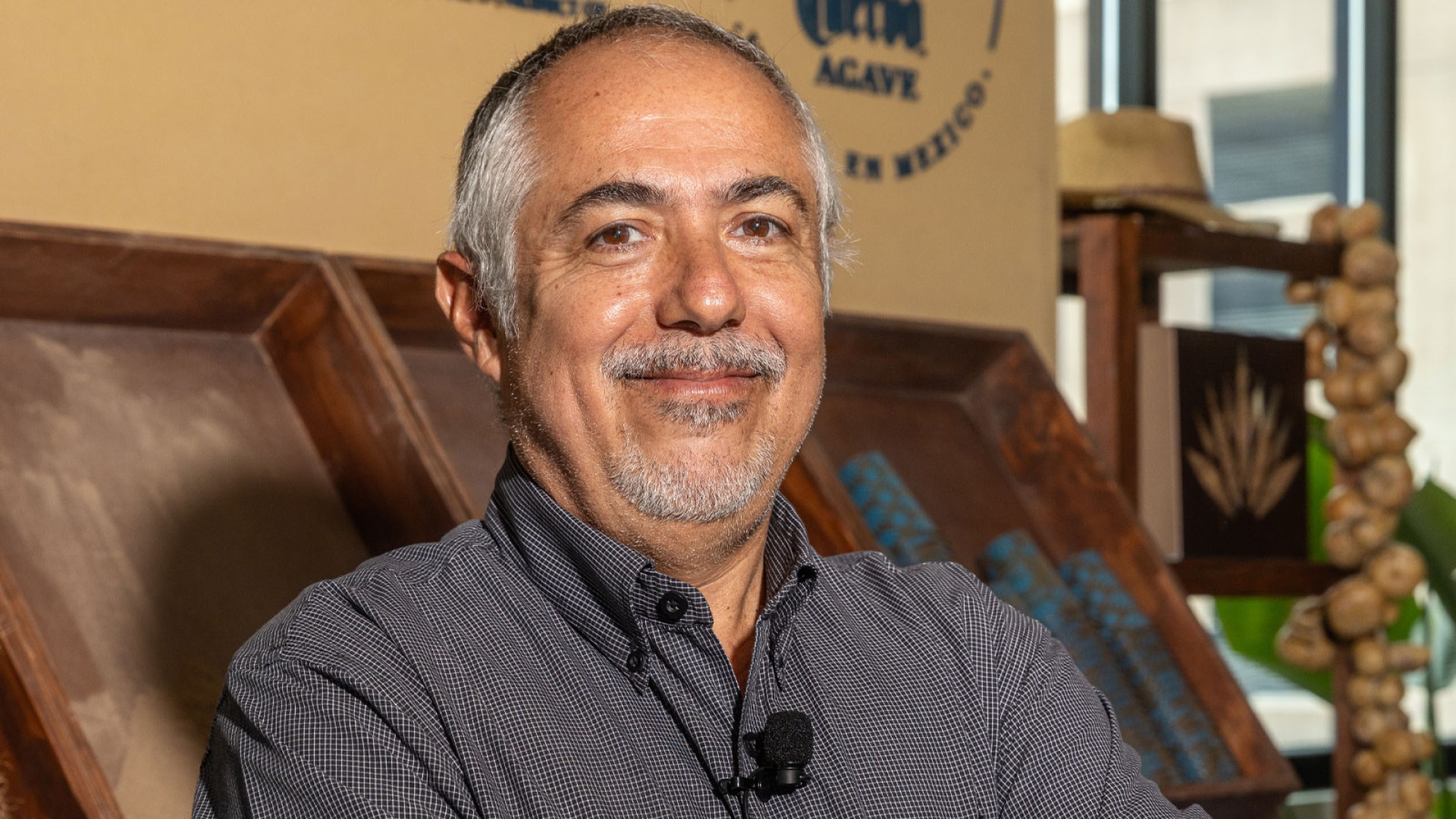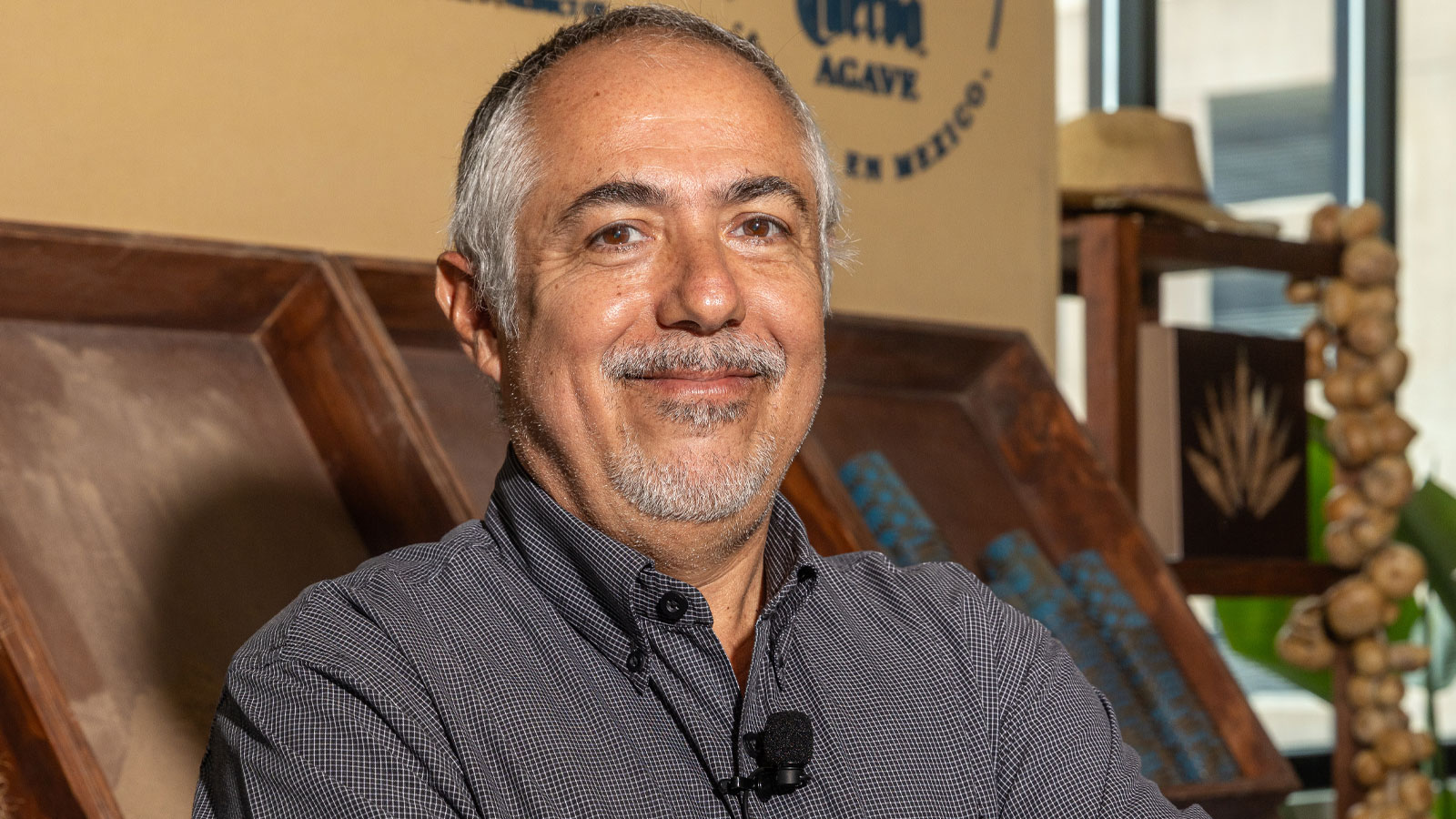

Clear Passion: A Conversation with Cuervo's Maestro Tequilero
September 22, 2025 –––––– Sponsored Content
If you were going to imagine an ideal Maestro Tequilero, you might consider the three-decade career of Alejandro (Alex) Coronado. Trained in chemical engineering, the Mexico native started with Cuervo as a strategic planning analyst, helping determine where to invest in the company’s future, then moved into operations, spending years learning every aspect of bottling, plant management, and the complex process of creating spirits. Today, as Cuervo’s Maestro Tequilero, he is responsible for distillation, bottling, and innovation for the entire portfolio. He has learned a few things along the way.
We spoke with him about artisanal and modern production, sustainable agriculture, and, above all, his ongoing passion for creating tequila.
What are the most significant issues in tequila production today?
It's very important we protect tequila, especially considering how much it's growing globally. Tequila is deeply rooted in Mexican heritage and is a symbol of national pride and craftsmanship. There's nothing like it in the world. There are fewer family-owned tequila companies now than there were even just a few decades ago, which makes it harder as an industry to do right by the spirit and protect its future. That future relies on sustainable production—everything from water conservation to agave farming practices to waste management. I’m proud to say that, as the oldest tequila company in the world, we are leading in this area.
And how does Cuervo do that?
We're one of the few producers in Mexico with on-site stillage treatment facilities, allowing us to process millions of liters of wastewater a day. This stops pollution of the surrounding waterways and allows us to use this treated water to run areas of the distillery. We are also leading in sustainable farming practices, and in ensuring fair wages and benefits for the 5000 farmers employed by us. Cuervo is an 11th-generation family-owned company, one of the first families to cultivate agave for use in spirits production—over 250 years ago—and so we are actually agave farmers first, and distillers second. We understand everything about the plant: how to grow it sustainably, how to collaborate with our farm workers and jimadors to harvest in peak conditions. We grow about two-thirds of our agave in our own fields, and we have long term contracts with agave growers. We set above-market prices with them to ensure fair and equitable conditions. That is incredibly important during times of agave shortages and agave surplus.
We always see guys hacking away at these cacti with sticks. Hasn’t modern farming arrived in the tequila industry?
First, agave isn't a cactus—it's more closely related to asparagus. Second, the "sticks" are called coas, and they're sophisticated harvesting tools. Each jimador's coa is custom-made for their hand and cutting style, and some are passed down through generations. No machine currently exists that can harvest agave, which makes the team in the field a critical part of the agricultural process. Our jimadores assess plant maturity, sugar content, and harvest timing by touch and sight, which is hard to replicate with machinery. I always keep this in mind: We are the producer with the largest agave holdings, and we are Mexico's largest agricultural company. Our more than 300 full-time jimadores have industry-leading wages. They are essential to our company.
Let’s talk about what happens when the agave comes to you. What’s the process? What kinds of precision are necessary to transform agave into the spirit in my glass?
After harvest, the process might seem simple: cooking, milling, fermenting, distilling. But there are so many combinations, so many ways of putting together the variables: cooking length, temperature, yeast strains, distillation, pressure. As the oldest tequila company we are technologically very advanced, but we still use the ovens that were built in 1812 at La Rojeña, the oldest tequila distillery in the Americas, to produce some of our artisanal tequila brands like Reserva de la Familia by Jose Cuervo.
For most of the eight tequila brands that we own, we slow roast the piñas for 36 to 40 hours to convert starches to fermentable sugars. Then we have fermentation for 40 to 50 hours with proprietary yeast strains, followed by double distillation in copper pot stills, or distillation in column stills, depending on the product. A tequila may then be aged – a critical step that impacts flavor. I am fortunate that we use all new oak barrels for maturation, which gives me a lot of control over the impact it has on the tequila. Time in barrel, type of oak, char level, and barrel size all contribute to the final character.
Does Cuervo employ the use of a diffuser? Can you talk about the use of diffusers in your process?
This is one of those myths out there that I'd like to explain. A diffuser is a machine that is an efficient way to extract sugar content from the agave. First, after harvesting, we shred the agave to expose all the plant fibers. Then we use hot water and steam to remove the sugars from the shredded agave, which is then boiled to convert into fermentable sugars. A diffuser reduces water usage by 50% and energy consumption by 46% compared to other cooking methods. A diffuser requires 20% less agave per liter. That has real sustainability impact. And there’s a flavor benefit, too. The resulting tequila has a lighter, more herbal profile compared to oven-cooked agave. People critique the use of a diffuser because they don’t understand what it is. It is simply like a pressure washer. No acids are used, which is a myth some like to spread. We use the diffuser method for the production of Cuervo Especial and our ready-to-serve brands.
If I’m in an aisle of premium tequilas, what information is right there in front of me? What do the NOM numbers mean, for instance?
It is important to be aware of not just what a product tastes like, but how it is made and who makes it. Do they invest in the Mexican region that helps create the spirit? Do they protect the environment? Start by reading the label carefully. It should tell you about the production methods, the region where it's made, and ideally something about the producer's history or approach. The NOM number on the package is an administration number assigned to the company—and people often think of looking up the NOM. But it is not the number assigned to a distillery location—a very common misconception. We use NOM 1122 on our packaging, which covers all four of our distilleries and our eight tequila brands. We also include the distillery address. Some brands will mention their cooking methods or talk about their fermentation and distillation process. Heritage matters too; Companies that have been around for generations tend to understand the complexities of working with agave, the land, and the people.
“Additive-Free" tequila is a hot topic right now. What are your thoughts on this?
I believe in full transparency when it comes to what’s in your tequila. But there’s a lot of confusion out there about additives. The truth is, additives are not harmful—they’re regulated and have been used safely in spirits like whiskey, cognac and rum for decades.
The bigger issue is that there’s no consistent testing across all tequilas. With shared equipment and third-party production, even additive-free tequilas can pick up trace amounts of other compounds. For example, our Cuervo Especial Silver is made without anything added, but trace elements can still show up in lab tests due to shared bottling lines.
So while “Additive Free” sounds simple, the science behind it is more complex. What matters most is honesty and quality in how tequila is made.
To find out more about Tequila – its history, heritage, and remarkable production techniques, visit tequilafacts.org.
For more Q&A with Alex, check out his recent Reddit Ask Me Anything.

